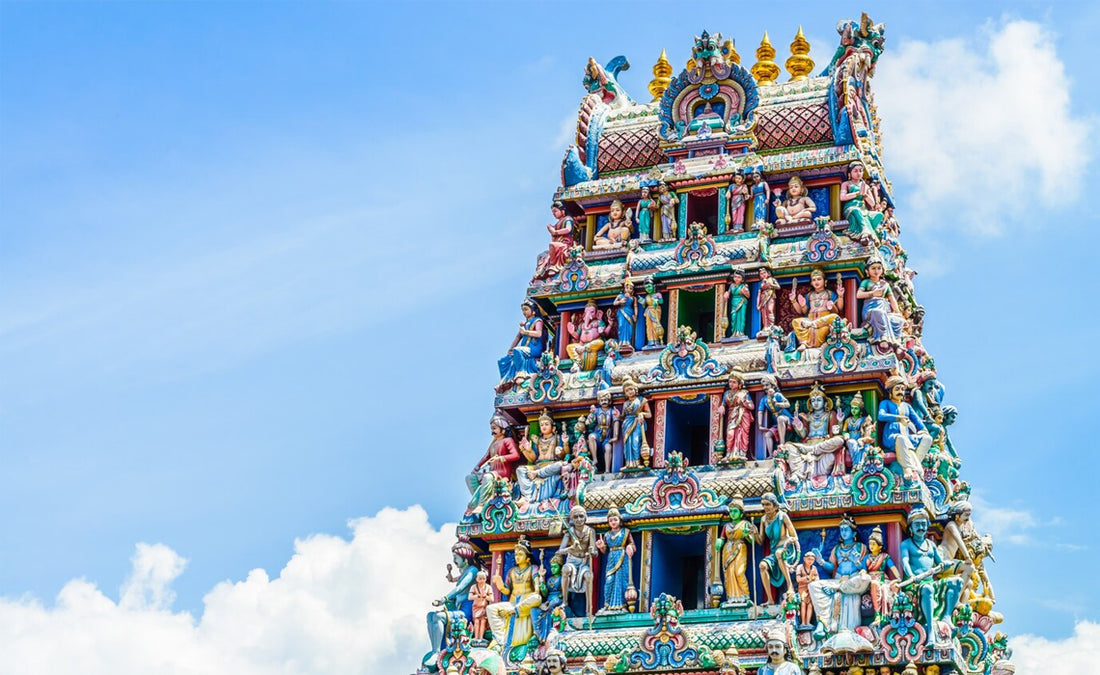The Meenakshi Amman Temple, situated in the heart of Madurai, Tamil Nadu, India, is an architectural masterpiece that has stood as a testament to devotion, artistry, and spirituality for centuries. This sacred sanctuary, dedicated to Goddess Meenakshi, the divine consort of Lord Shiva, is not just a place of worship but a living embodiment of the rich cultural and religious heritage of South India.
Historical Origins
The roots of the Meenakshi Amman Temple trace back to ancient Tamil literature and mythology, with references dating as far back as the Sangam era (3rd century BC to 4th century AD). According to legend, the temple's origins are intertwined with the life of Meenakshi, a formidable and divine princess born to King Malayadwaja Pandya and Queen Kanchanamala. Meenakshi, a name that translates to "fish-eyed" due to her captivating eyes, was born with three breasts, a unique characteristic that held great significance.
A divine prophecy foretold that Meenakshi's extra breast would disappear when she met her destined husband. True to the prophecy, when she encountered Lord Shiva in his avatar as Sundareswarar (the handsome lord), her third breast vanished, signifying their union in matrimony. Thus, Meenakshi and Sundareswarar became the presiding deities of the temple, and it was named "Meenakshi Sundareswarar Temple."
Historical records suggest that the temple's construction began during the reign of Kulasekara Pandya in the 6th century AD. However, the temple underwent various phases of expansion, renovation, and embellishment under the patronage of different dynasties, including the Cholas, Cheras, and Nayaks. The temple's architecture reflects the evolution of Dravidian temple art and represents a harmonious blend of various architectural styles.
Architectural Marvels
The Meenakshi Amman Temple is renowned for its architectural grandeur, intricate sculptures, and sprawling complex. Spread over an area of 14 acres, it boasts of a magnificent entrance tower (gopuram) on each of its four sides, with the tallest one, the Southern Gopuram, soaring to a height of 170 feet. These gopurams are adorned with thousands of intricate sculptures depicting various mythological tales and religious narratives.
One of the most awe-inspiring features of the temple is its "Hall of a Thousand Pillars" (Aayiram Kaal Mandapam). Though not literally housing a thousand pillars, it is a vast hall supported by numerous intricately carved pillars, each unique in design. The hall is a testament to the unparalleled craftsmanship of the artisans who dedicated their lives to create this architectural marvel.
The temple complex also includes shrines dedicated to various deities, meditation halls, sacred tanks, and mandapams (pavilions) that provide a tranquil space for prayer and reflection. The sacred tanks, especially the Potramarai Kulam (Golden Lotus Tank), play a pivotal role in temple rituals and festivals.
The intricate carvings on the temple walls narrate stories from Hindu mythology, depicting gods, goddesses, celestial beings, and earthly life in exquisite detail. The narrative panels on the walls serve not only as an artistic spectacle but also as a medium to impart spiritual and moral teachings to the devotees.
Spiritual Significance
The Meenakshi Amman Temple is not merely a work of architectural brilliance but also a spiritual epicenter that attracts millions of pilgrims and tourists annually. Devotees believe that seeking the blessings of Goddess Meenakshi and Lord Sundareswarar at this sacred abode brings spiritual enlightenment, prosperity, and liberation from the cycle of birth and death.
The temple hosts several significant festivals throughout the year, with the Meenakshi Thirukalyanam (the celestial wedding of Meenakshi and Sundareswarar) being the most prominent. This grand event, celebrated during the Tamil month of Chithirai (April-May), draws thousands of devotees who come to witness the divine union of the deities. The festival is a vibrant spectacle of processions, music, dance, and religious rituals, immersing the city in an aura of devotion and festivity.
Another noteworthy festival is the Chithirai Thiruvizha, a ten-day extravaganza that recreates the legendary journey of Lord Alagar (Vishnu) from Azhagar Kovil to Madurai. It culminates with his arrival at the Meenakshi Temple, marking the temple's association with both Shiva and Vishnu traditions.
Enduring Legacy
The Meenakshi Amman Temple has transcended time and continues to be a living testament to the enduring legacy of ancient Indian art, culture, and spirituality. Its architectural magnificence has inspired countless artists, scholars, and travelers from around the world.
The temple has also played a pivotal role in the socio-economic development of Madurai. It has been a center for cultural activities, artistry, and education. The temple complex houses several schools dedicated to traditional art forms, including music, dance, and sculpture, ensuring the preservation and transmission of these precious traditions to future generations.
In recent times, the temple has embraced modernity while preserving its heritage. It has introduced initiatives to enhance visitor experiences, including guided tours, cultural exhibitions, and digitization efforts to preserve the temple's rich history.
The Meenakshi Amman Temple in Madurai stands as an extraordinary monument to faith, culture, and artistry that has endured for over a millennium. Its rich history, awe-inspiring architecture, and profound spiritual significance continue to draw pilgrims and enthusiasts alike. Beyond its religious role, the temple has played a pivotal role in preserving and promoting traditional Indian arts and culture.

